Get to know more about Vietnamese Traditional Holidays!
While Vietnam follows a 12-month Gregorian calendar for daily life, many local festivals follow a lunar calendar, meaning their dates vary each year. Below is a list of public holidays and major festivals that you may have to take some notes on before getting to Vietnam.
National Holidays – Tet, Vietnam
-
New Year’s Day – 1st January
-
Tet (Vietnamese New Year) – late January/early February
The biggest festival celebration is a little like New Year’s meets a good old spring clean. Respects are paid to ancestors, new clothes are bought and worn, banquets are prepared, flowers are arranged and an emphasis is put on resolving feuds. For the visitors, all this means an exhilarating atmosphere of anticipation and renewal.
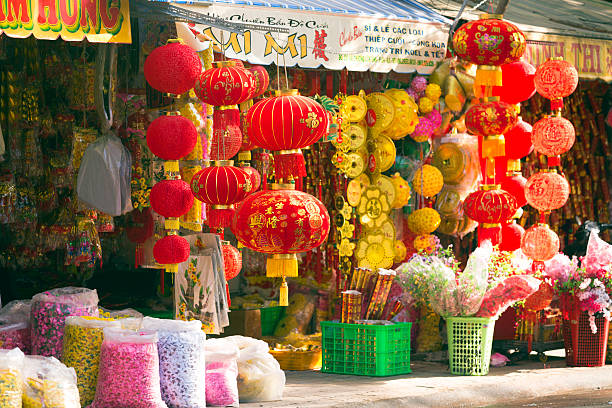
A colorful arrangement of Chinese New Year and Tet decorations for sale in stores located in the Cho Lon area of Ho Chi Minh City, Vietnam.
The name Tet Nguyen Dan is Sino-Vietnamese for “Feast of the very First Morning”. Tet takes place from the first day of the first month of the Lunar calendar (around late January or early February) until at least the third day. There are three significant components to this date: it marks the beginning of the New Lunar Year, the start of spring, and the official birthday of everyone in Vietnam. Tet is Vietnam’s biggest celebration and the festivities go beyond the country’s territory. The massive population of overseas Vietnamese across the globe also joins this yearly occasion.
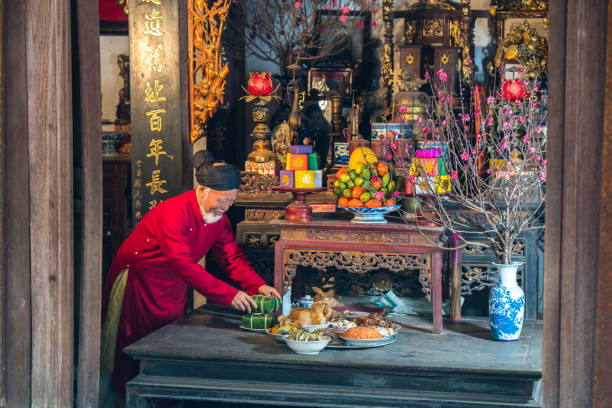
An elderly preparing altar with foods for the last meal of year. The penultimate New Years Eve – Tat Nien – the meal finishing the entire year.
Summer Highlights (April & May)
-
Reunification Day Holiday – 30th April
-
Labour Day – 1st May
Also known as Victory Day or Liberation Day, this public holiday marks the fall of southern Vietnam, the end of the Vietnam War and the resulting unification of Vietnam. Streets are dressed in Vietnamese flags as patriotic parades take place in major cities across the country.
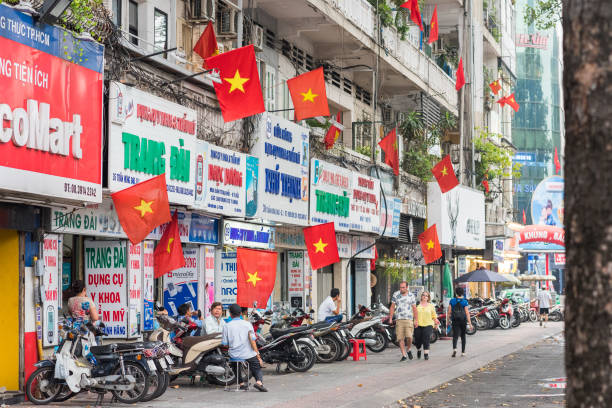
An abundance of Vietnamese flags are hanged on the street, on the eve of Reunification Day and International Labor Day.
Music performances featuring victorious songs can be heard in public squares, while fireworks light up the sky in Ho Chi Minh City. Reunification Day immediately precedes Labour Day, giving many people a few days off work and school. Most businesses close during this time, though shops and tourist areas remain open.
*Normally, these two major holidays are always honored continuously because the dates are close to each other. Therefore, the holiday will also last for 3-4 consecutive days (including weekends and interspersed with the next week’s compensation days).
National Holiday – 2nd September
National Day commemorates the Vietnam Declaration of Independence from France on 2nd September 1945. A festival atmosphere can be felt across the country as flags are hung, bars and restaurants extend their hours and streets are closed to traffic for patriotic street parties. In Hanoi, the streets around Hoan Kiem Lake become pedestrian-only and filled with performances and an array of vendors selling tasty street food. In Saigon, fireworks and a street party fill Nguyen Hue Street.
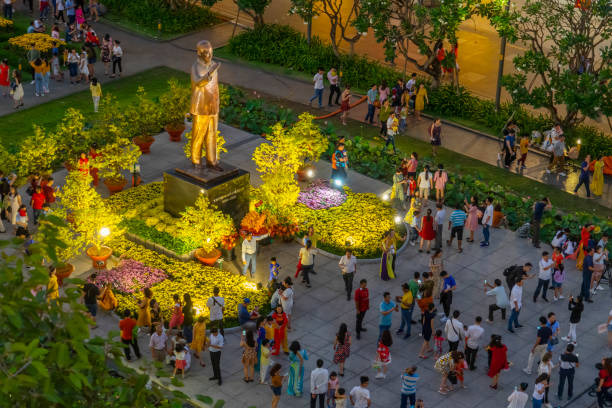
Crowds around a statue of Ho Chi Minh, Nguyen Hue Walking Street during Tet.
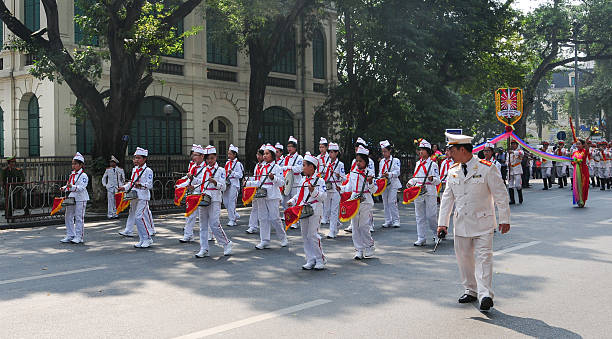
A police brass orchestra on Hoan Kiem park in Independence Day celebrations in Hanoi, the capital city of Vietnam.
Mid-Autumn Festival – late September/early October
This popular festival originated for children, yet the adults still make it as fun as possible; as its meaning is based on a fairy tale that has been associated with the childhood of many Vietnamese generations.
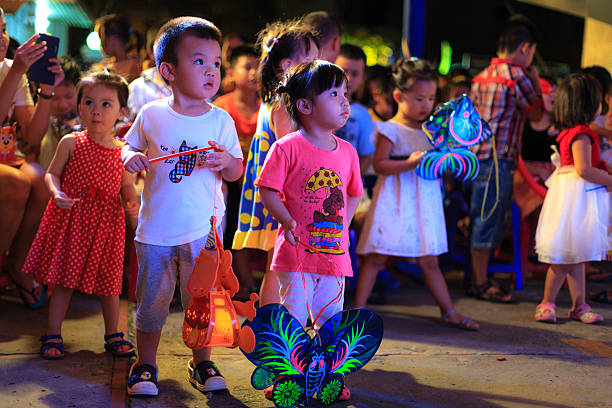
Children are happy to attend mid-autumn festival of the full moon in August.
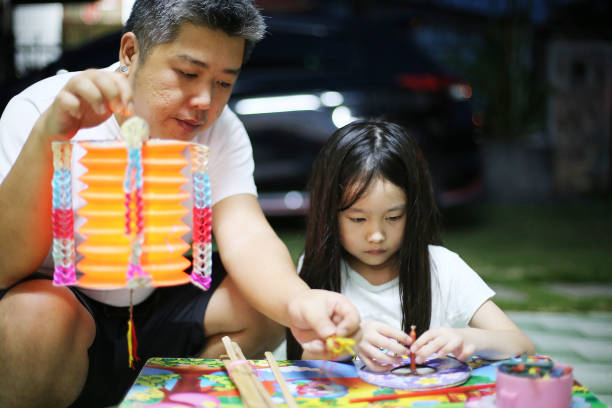
Parents would usually spend time with their kids by making lanterns, taking them to China Town to watch colorful lanterns being displayed on the busy streets.
With ancient roots rich in myth and legend, travelers will delight in seeing kids performing lion dances and participating in street processions. It’s also customary to give and receive Banh Trung Thu, or boxes of mooncakes, during this time. The exotic cake is filled with lotus seeds, red beans and sometimes a yoke from a salted egg to represent the moon. By tasting this traditional festival food if you have the chance to visit Vietnam.
Also, don’t miss a chance to visit Phan Thiet for a chance to sightsee the biggest lantern festival parade of the country, which shows “giant” lanterns of the public schools being displayed and paraded throughout the city center.

